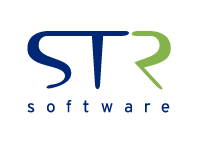Growing Case Against Physical Receipts
With business travel increasing at a steady 38 percent every year since 2009, the volume of expense reports to approve and employees to reimburse isn’t going down anytime soon. If a business trip spans 4-6 days on average, a typical expense report comes with at least 12-18 receipts to account for meals alone, and this doesn’t even account for lodging, transportation, and other incidentals. With so many receipts to organize, organizations must work to streamline processes for entering and approving expense reports.
In order to validate expenses made for business purposes, most reimbursement policies require an employee to submit receipts for each line item along with the expense report. In 1997, the Internal Revenue Service deemed electronic copies of receipts as acceptable expense substantiation, but many organizational policies still require employees to submit original physical receipts to prevent fraud.
Expense Report Approval in Oracle EBS and JD Edwards
Applications like Oracle EBS or JD Edwards provide a uniform document template on which employees enter their spending to streamline approvals. Unfortunately, neither Oracle nor JD Edwards provides an easy way to combine an expense report and its associated receipts into a single file. This makes it difficult to circulate the report for approval and also causes a cumbersome, inefficient process to print and store expense reports for audit purposes.
With standard functionality in Oracle or JD Edwards, a user creates an expense report, scans each receipt into the system, and then associates the individual files to the expense report. When the person responsible for approving the expense report logs into the system, he must open each individual receipt file one-by-one and match it to the appropriate line item on the expense report. Opening each receipt file adds needless time to the approval process and delays the employee’s reimbursement.
If physical receipts are required, a common work-around is for an employee to complete an expense report inside the application, write the report number on an envelope containing the physical receipts, and submit the envelope to the approver. Then, the approver must locate the report and approve it by manually matching physical receipts to line items on the digitized report. This strategy is inefficient and unreliable because it places a huge manual effort on the person responsible for reviewing and approving expense reports.
Streamline Expense Approval & Receipt Organization
With AventX Attachment Xpress, employees can take scanned receipt images and associate them to an expense report within your application. Once the receipts have been associated to the system’s expense report, AventX Attachment Xpress can combine the receipts and expense report into a single file. Consequently, the person responsible for approvals simply opens one document with all the required information.
This file can be saved electronically to an archive directory or printed and filed away for audit purposes. Maintaining electronic copies preserves an organized and searchable financial audit trail with minimal effort. If additional approvals are required, AventX can also email the combined file as a single attachment. The combined file saves the approver from juggling or sorting through physical receipts to begin the approval process.
Automating the process of combining expense reports with supporting receipts saves time, keeps audit records organized, and can help employees get reimbursed quickly. For more information about how AventX Attachment Xpress can streamline expense reporting at your organization, contact us here for a personalized demonstration!
—
Information provided by the Global Business Travel Association




![Rollup of Product Updates [Winter 2025; v25.1]](https://www.strsoftware.com/wp-content/uploads/2023/02/Feature_Image_ProductUpdate_Wave-510x382.png)
